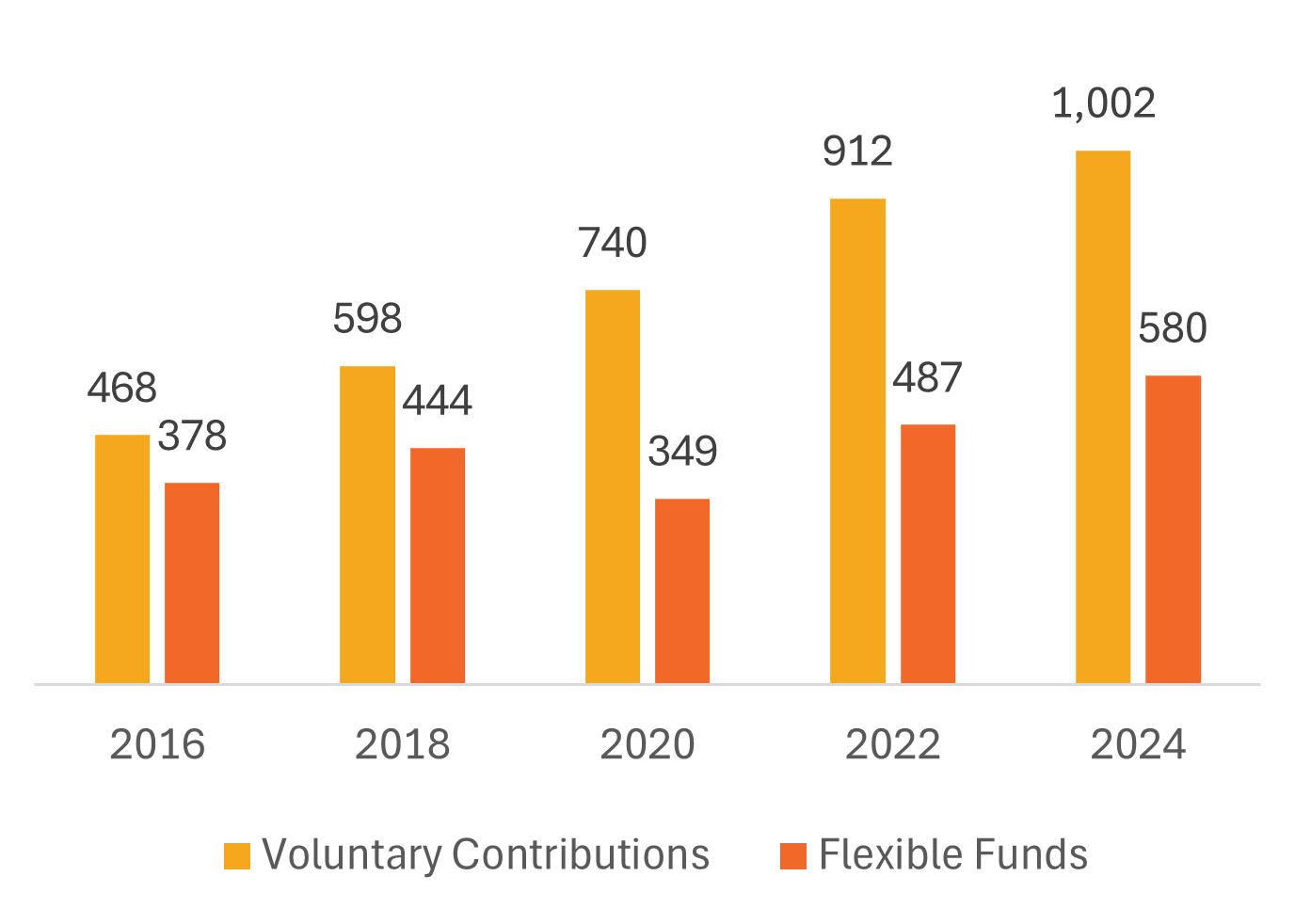
WHO PRESENCE IN COUNTRIES,
TERRITORIES AND AREAS
2025 REPORT
Stronger WHO country presence for a healthier and safer world

Financing of country offices
WHO’s ability to deliver impact at the country level relies on sustainable, predictable and flexible funding. As of 31 December 2024, of the US$ 2442 million approved budget (base only) for country offices, US$ 1578 million (65%) had been made available from various funding sources. The financing of country offices (including for base programme) has been increasing through the years. Flexible funds allocation to country offices has also been increasing. At the mid-point of the 2024–2025 biennium, US $580 million in flexible funds had been distributed to country offices, which was an increase of 35% compared with the allocation at the mid-point of the 2016–2017 biennium (see figure below). Funding for the CPCP initiative contributed to this increase. However, the percentage of the country office budget that is funded is still relatively low compared with headquarters and regional offices due issues of flexibility, such as earmarking of the funding for the Organization. About 65% of the country office budget (2024–2025 base only) was funded at the mid-point of the biennium, compared with headquarters’ full financing and 80% for regional offices.

Signatures on the WHO Investment Case wall at the 77th World Health Assembly on 29 May 2024 at the Palais des Nations in Geneva, Switzerland.
Trends in financing of WHO country offices, mid-point of the biennium (2016-2024)

However, as the country offices’ share of the Organization’s total flexible funds (currently 36%) increases, it will improve the predictability of their financing. Flexible funds distributed to country offices account for 16% of their total funds. Country offices depend largely on voluntary contributions, which account for 84% of the funding source for all their operations (both base and non-base).
Funds available per level of the Organization (percentage share of the total, base only)
| Flexible funds | Voluntary contributions | |
| Headquarters | 37% | 45% |
| Regional office | 27% | 16% |
| Country office | 36% | 39% |
| Total % | 100% | 100% |
Of the funds available for country offices for the base segment, 94% is allocated to type C, D and E countries, which means funding is prioritized for countries requiring extensive technical support. However, on average, only about 70% of the budget is funded, especially for type C to E country offices. Funds for non-base operations (polio and emergency response) are mainly allocated to type E country offices with large-scale emergency response operations. More than 80% of the operations in type E country offices are funded from voluntary contributions.
Funds available per type of country office (percentage share, base and non-base)
| Country office typology | |||||
| A | B | C | D | E | |
| Base | 2% | 4% | 23% | 29% | 42% |
| Non-base | 0% | 1% | 7% | 8% | 84% |
Expenditure in country offices accounted for 56% of the total expenditure of the Organization at the end of 2024. However, more than 50% of that expenditure was on polio and emergency responses, with 86% of the expenditure on polio and emergencies in type E countries.
Find out more about the Organization’s work, financing and implementation progress across its General Programme of Work through the WHO Programme Budget Web Portal.
